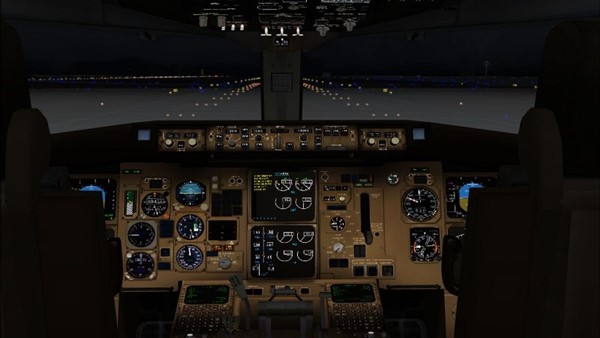

The original post title was whether FS X was any good for helicopters. Lots of IFR pilots tune themselves up with an FS program, especially if they are not doing any IMC in their regular job. I've seen some basic VFR training done with FS or X-Plane with the little control setup mentioned earlier in these posts and it is quite impressive when done in front of a large screen. Laptops are OK, but if you can connect to that 46" LCD you watch football on it is a whole different experience. You can bet on the correct hold entry with your copilot and then the box will tell you if you were both wrong (best part is that then you don't have to buy the FMS the first round at the watering hole). You need to learn the basics, but once in the real world hold entries are calculated and timed by the FMS. Flying an NDB approach with the 500 screen to peek at makes it a lot easier, just like real life. The built-in Garmin for FS is pretty basic but OK for training.
Level d fsx acceleration cost index software#
I once saw a software splice that put the Garmin 500 sim into the FS program, but never got it to work right.

The FS sims have either a Garmin 500 or 295 that you can put up in the corner of the screen and use like you would in a real aircraft. Practically in the real world nobody ever tracks a VOR or flies an NDB approach - it is all GPS. Practise the NDB and VOR stuff because you'll probably get some Luddite hard-ass examiner for your ride that will want to see it. A big part of learning is watching to see what all the other instruments are doing to give you a hint of what's going on. And besides, for procedural work like hold entries and tracking you can just work the heading bug. Modern aircraft these days are all autopilot flown (except for you sorry 222UT guys and the other unfortunates in a Phase II S76).

Play a little with the joystick to get your scan up to speed, then fly it with the autopilot. Get a panel that matches - Learjet seems to sub pretty good for the S76C+, Caravan for the steam gauge aircraft. So, depending on what you fly you can bring up different models. You learn a little internal clock in the back of your head to keep up to date with things. For IFR flying and practise there are two separate skills: platform flying without reference to ground and the necessary development of the instrument panel scanning skills, and secondly the procedural part of knowing what to do when.

I've used FS2004, got the demo FS X running but it is a bit of an graphics hog. So MS Flight Sim - good for procedure training and that's it. Just another human factor that MS Flight Sim can't simulate and that influence your ability to fly, scanning etc. Been close enough once or twice during IR training in real IMC, or total blackness and googles over the swamp of Florida with zero reference anywhere outside :yuk. I have so far never been even a bit close of getting just a bit airsick flying the MS Flight Sim. And it's usually the NDB approaches that students strugles the most with. And on autopilot with headingbug too - so if the FTO doesn't bother, why should the student ?Īctually the FTO recommended not to train NDB approaches on MS Flight Sim, because people got used to it doesn't have lead/lag and they have great problems when they go to the PA28 Sim or B206L helicopter. Yes, Single prop Fixed Wing - because it was procedure training of the instruments, not flying. When I did my JAA IR(H), the 10 hours sim was done on a Piper PA28 simulator.


 0 kommentar(er)
0 kommentar(er)
